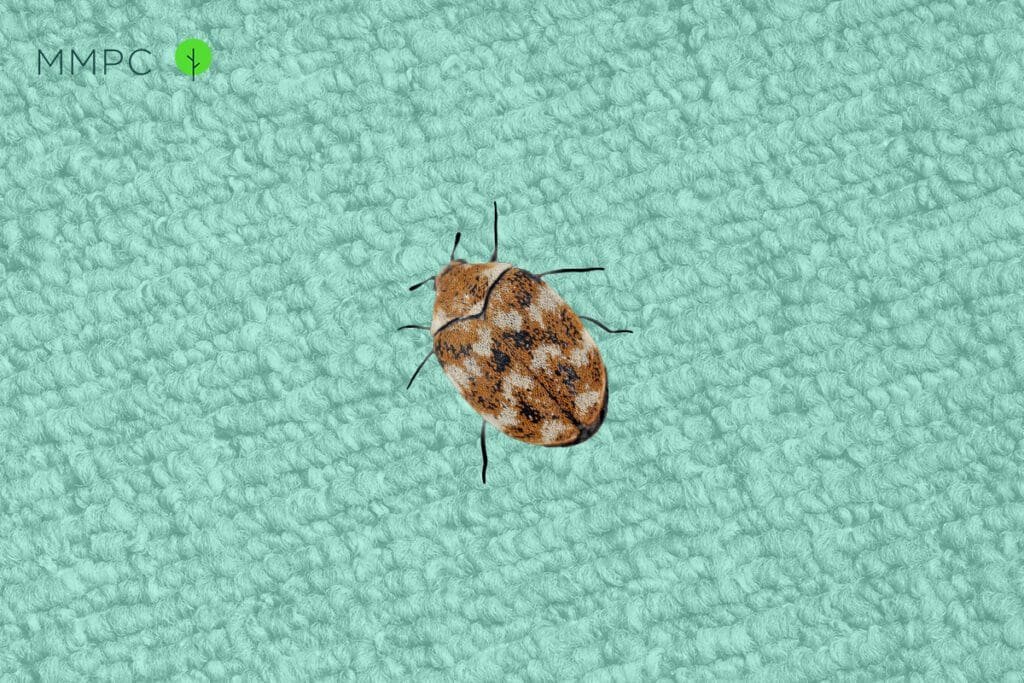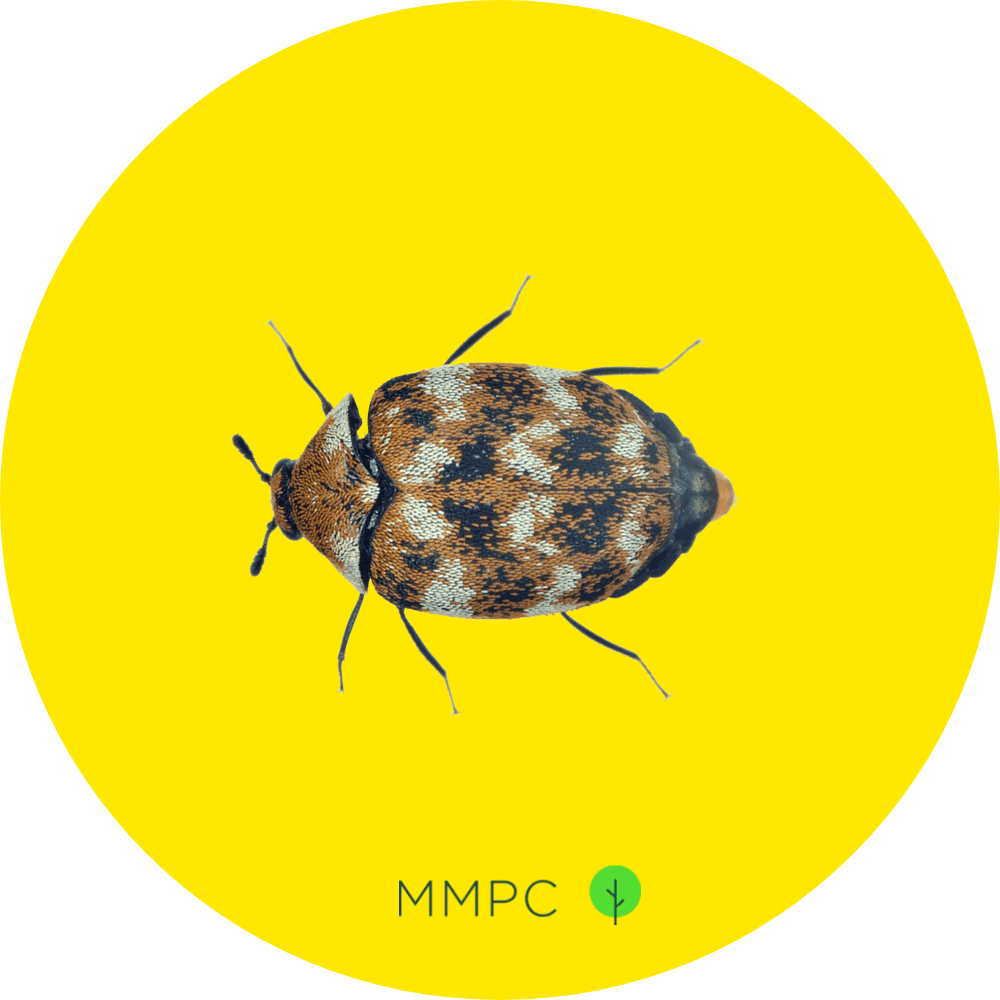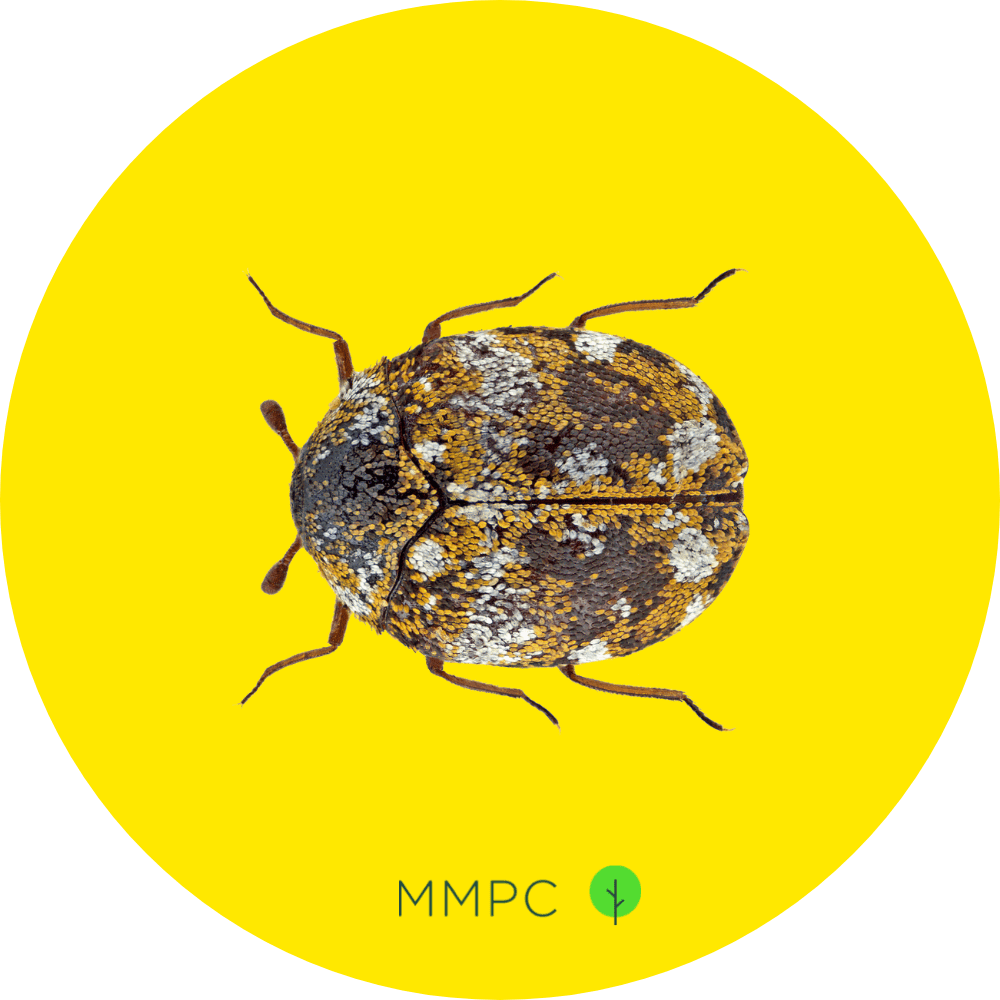
Carpet beetles are a common household pest that targets carpets, clothing, and upholstered furniture.
In New York, there are three species of carpet beetles you might encounter in your home: the black carpet beetle, the furniture carpet beetle, and the varied carpet beetle.
Adult carpet beetles are normally found outdoors feeding on flowers and plants, but they can sometimes fly into your home from an open window or be brought in accidentally on cut flowers or groceries. Once inside, they lay eggs in fibrous materials, which are a source of food for the fuzzy little carpet beetle larvae that hatch.
Carpet beetle larvae are cigar-shaped and vary in color from reddish-brown to black based on the species. They typically have lighter-colored stripes along their back, with many thin hairs sticking out of their bodies.
5 Signs of Carpet Beetles
If left unchecked, a carpet beetle infestation can potentially cause a significant amount of property damage. Here are 5 signs for identifying a carpet beetle infestation in your home:
1. Damage to Fibrous Materials
When carpet beetles infest your home, there are several types of items and materials their larvae might feed on. They’re best known for being a danger to carpeting, but actually carpet beetle larvae will eat their way through any fibrous materials that contain keratin, such as wool, fur, felt, silk, feathers, and leather.
When carpet beetle larvae begin to consume carpets and rugs, they tend to graze across the top and the underside, leaving behind bald patches or fraying.
The name “carpet beetle” comes from a time when most carpets were made from wool. They don’t feed on modern carpeting made from synthetic materials.
2. Holes in Clothing
If you’re unlucky, you might find these pests feeding on clothing as well. When carpet beetles find their way into your closets, their larvae may chew holes in items like sweaters, scarves, coats, and blankets.
The damage they cause in clothing usually consists of holes in large clusters or groupings. In comparison, clothes moths (another type of pest that feeds on fabrics) tend to graze along the surface of fabrics, creating only small, sporadic holes.
Since carpet beetle larvae prefer dark, isolated areas, they’re more likely to be found feeding on fabrics and clothing that have been stored away or are untouched for long periods of time.
3. Shed Skins
As they grow, carpet beetles undergo a molting process and shed several times, leaving behind empty skin casings.
The shed skin of a carpet beetle typically appears translucent with a yellow or brown hue. These dry and hollow shells are shaped somewhat like sunflower seeds, and range in size depending on the species and molting stage.
At first glance, the shed skin of a carpet beetle can look similar to the shed skin of a bed bug. One way to differentiate the two is by their shape—carpet beetle shells tend to appear longer, while bed bug shells appear more rounded.
Shed skins from carpet beetle larvae can be found in areas where they feed, such as under rugs, in between piles of clothes or blankets, and around the seams of furniture.
4. Fecal Pellets
As they feed, carpet beetle larvae leave behind small fecal pellets, which look like small specks similar in size to table salt.
The color of their feces is typically black or brown, but this may vary depending on the color of whatever their last meal was.
Like with shed skins, fecal pellets from carpet beetles are usually found in areas where the larvae feed.
5. Skin Irritation
While carpet beetle larvae don’t bite people, they can sometimes cause skin irritation, rashes, or welts collectively referred to as “carpet beetle dermatitis.” These symptoms may develop in some people as an allergic reaction to carpet beetle larval hair and hemolymph.
Carpet beetle larvae have hair all over their body, which extends out of their skin at different angles. As they shed their skin and mature, the hairs fall off and stay on the carpet or other materials they were feeding on. Long-term exposure to these hairs may result in an acquired hypersensitivity reaction, resulting in the symptoms described above.
Need Help With Carpet Beetles?
If you think you’ve seen carpet beetles or their larvae in your home but aren’t positive, MMPC offers a free pest identification service. Just sent us a picture of what you found and our entomologists will provide conformation and, if needed, recommendations for treatment.






